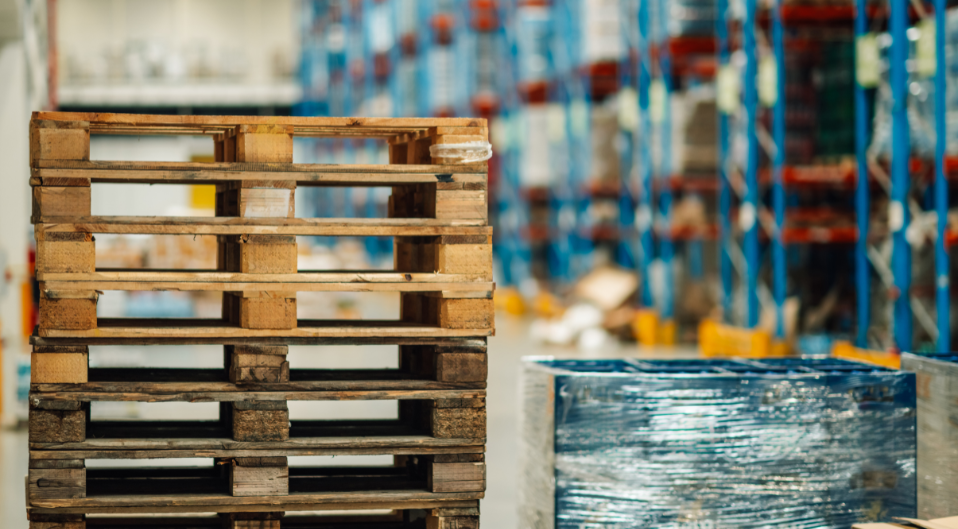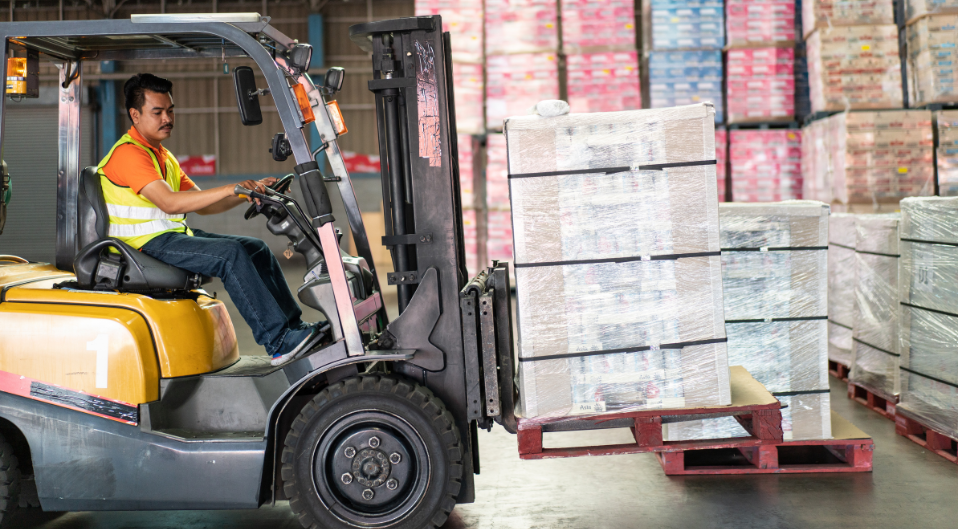7 Mistakes to Avoid When Shipping Pallets
If you’re shipping bulk goods then using pallets is one of the most efficient and secure ways to do so. However, it’s not quite as simple as just stacking some boxes on a pallet and wrapping them up.
Pallets need to be prepared correctly in order to reduce the risk of damaged goods, surcharges, delivery failures, or rejected collections. To help avoid any nasty surprises, we’ve put together some advice to help you avoid some of the most common pallet shipping mistakes.

1. Incorrect Stacking
It’s crucial to make sure that your goods are stacked evenly on your pallet and that heavy items are placed on the bottom with lighter items on top. Try to ensure that your goods are stacked in a way that creates a flat top, and if you can, stack the boxes like bricks to add stability and reinforce your pallet against side pressure.
All of these actions will help to reduce the risk of your pallet collapsing or toppling over, and ensure that your goods reach their final destination successfully.
2. Poor Wrapping and Securing
Plastic wrap is one of the most common ways to secure goods onto a pallet, but you need more layers than you might think. Goods that are wrapped too loosely can shift during transit, damaging the contents and compromising the stability of your pallet.
Make sure to apply multiple layers of wrapping and ensure that these are tightly secured from the base upwards. Don’t forget about the corners of the pallet and consider using straps if your load is heavy or you believe it needs extra security.
3. Ignored Delivery Restrictions
Some delivery points may not have the facilities to accept pallet deliveries. For example, if a pallet is being sent to a residential property or retail store, they may not have a forklift available, so a tail lift delivery will be required.
In this case, you need to make sure that any restrictions around deliveries are communicated when you book your shipment to avoid failed delivery charges. Unsure if you’ll need a tail lift delivery or not? Get in touch with our customer service team who will be happy to help (make sure to provide any information you can around access restrictions, limited delivery hours, or other special requirements when you speak to our team).

4. Poor Choice of Pallet
If your pallet is weak, broken, or the wrong size, then you put every single one of the goods stacked on it at risk. Using a cracked pallet might cause it to break under the load which can not only damage your goods, but result in couriers refusing to collect or deliver.
A good rule of thumb is to stick to industry-standard pallet sizes which are usually 120cm x 120cm in the UK. If you’re shipping internationally then your pallet will need to be ISPM 15 heat-treated, as some countries won’t allow untreated wood to cross their border.
With all pallets, make sure that they’re inspected thoroughly before any of your goods are loaded onto them to ensure that there are no breaks or other defects.
5. Overhanging Goods
It’s common for boxes that are wider than the pallet’s footprint to be placed on top, causing them to hang over the sides. If your goods stick out over the edges of your pallet, then this means that they’re not only more likely to be damaged in transit, but the pallet can’t be safely handled by forklifts either.
Even if your goods are only slightly overhanging, you run the risk of crushing the corners of your boxes when your pallet is loaded onto a tightly packed truck. To avoid these risks, make sure that all of your items fit completely onto your pallet with no overhang. If necessary, choose a larger pallet than trying to squeeze your goods onto one that’s too small and risking damage.

6. Missing or Incorrect Labelling
If your labels are missing, unclear, or not securely attached then it stands to reason that your shipment will be delayed, misrouted, or even lost, as couriers will not know where to send your pallet.
Avoid the temptation of handwriting the address on paper and taping it onto the box, as this can come loose during transit. Instead make sure that you print and attach the correct, courier-approved labels, securely to at least two sides of the pallet (this is so that you have a backup in case one of them falls off).
Shipping internationally? Make sure that your customs paperwork is sealed in a clear pouch and attached to the outside of the pallet to avoid any issues with clearing customs.
7. Unknown Weight or Dimensions
Carriers charge for pallets based on information such as weight and dimensions. If the figures that you provide are wrong, then your pallet will be re-measured when it reaches their depot which will usually result in a surcharge or a delay.
Make sure that you always weigh and measure your pallets carefully before informing your courier of your measurements. Remember to include the pallet weight in your measurements and round up instead of down to avoid the risk of under-declaring.
Pallet Shipping Checklist
Before you ship, run through this quick checklist to make sure your pallet is ready. You can print off our handy graphic for future reference too:
- Is your pallet strong, undamaged, and the correct size?
- Do all goods fit within the pallet’s footprint (i.e.. there’s no overhang)?
- Are your boxes stacked evenly, with heavier items at the bottom?
- Is the load securely wrapped with multiple layers and straps if needed?
- Are labels attached on two sides, and is your paperwork complete?
- Have you recorded accurate weight and dimensions (including the pallet)?
- Have you checked delivery requirements and restrictions (tail-lift, restricted access, etc.)?
.png)
Answered ‘yes’ to every question? Then congrats! Your pallet is ready to be shipped. Answered ‘no’ to one of the questions and not sure how to fix the issue? Get in touch with our customer service team who will do everything they can to help.
Remember, when you ship your pallets via ParcelBroker, you’ll have the added peace of mind of transparent pricing, expert support throughout, and discounted courier rates.